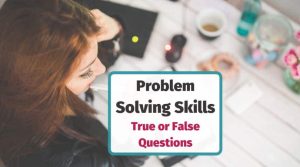What Schools Miss When They’re Missing Relationship Data
Previous month, a new examine in Character revealed a crucial predictor of financial mobility: connectedness. Especially, scientists at Prospect Insights discovered that interactions with larger-money students considerably improved minimal-earnings students’ prospects of upward mobility in adulthood, even much more than classic success metrics like university top quality.
The Opportunity Insights team garnered praise for the sheer sizing of the details set they created to reach their conclusions: Their Social Capital Atlas consists of a staggering 21 billion info factors on link, mined from de-discovered Fb info from 72 million consumers. The evaluation also yielded a new species of faculty-amount facts, charting the degree of economic connectedness within just unique superior faculties and schools throughout the region.
This new research begs a even larger question for training leaders striving for far more equitable outcomes: What forms of marriage facts do universities require to understand the trajectories their pupils are on, and the interactions and sources at their disposal?
Sad to say, legacy education and learning info methods almost never consist of a lot in the way of relationship facts.
That’s not to say educational institutions fly entirely blind. Schools can maintain monitor of which students are paired with what academics. They can assign advisors or mentors to learners who are battling. They can administer culture and belonging surveys that measure how pupils and employees working experience and perceive their group.
But rosters and local climate surveys only get you so significantly. They lean establishment-centric, relatively than pupil-centric. In other terms, they not often expose the real associations and networks at perform in students’ lives. Additionally, they notify schools absolutely nothing about students’ connections with spouse and children, friends, coaches, neighbors and the like that make up a younger person’s precise network, and generally have useful assets that schools could faucet into.
Mapping Who Learners Know
How may well universities go about identifying who students know? A person evident technique to acquire a far more finish photo of students’ networks is to ask pupils by themselves.
Generally, this can take the form of an activity called partnership mapping, which I describe in increased element in a new report for the Christensen Institute, Students’ hidden networks: Partnership mapping as a strategy to develop asset-centered pathways.
Romance mapping has minimal-tech roots. For many years, social staff have created pen-and-paper “ecomaps” with purchasers to reveal their social supports and stressors.
“Network mapping, ecomapping, relationship mapping—it’s all the thought of striving to get on paper, ‘Who are the men and women in your lifestyle?’” mentioned Sarah Schwartz, a clinical psychologist and foremost mentoring researcher whom I interviewed. “When I do it with younger individuals, I use a blank piece of paper, place their title in the middle and commence drawing lines and asking them, ‘Who’s in your university? Who’s in your group? Who’s in your community? Who are your caregivers’ good friends? Who’s in your spiritual local community?’” explained Schwartz.
This exercise has been sluggish to migrate from paper into the digital realm. Even fairly well-known applications like Harvard’s Building Caring Common’s virtual Romantic relationship Mapping Tactic count on simple spreadsheets.
Pen-and-paper and spreadsheets may perhaps suffice for quick pursuits and compact systems. But they risk a static tactic to romantic relationship data. With greater instruments, that knowledge could verify each a effective and dynamic indicator above time. Luckily for us, a variety of business people are starting to develop applications that could supercharge schools’ potential to accessibility and shop secure information on students’ networks in techniques that enable both equally young individuals and the institutions that serve them maintain monitor of their connections.
Producing the Invisible Seen
Some resources have emerged from researchers focused on the electric power of community science to boost outcomes. For illustration, a new open-supply investigate resource Community Canvas, designed as a result of the Sophisticated Facts Collective, streamlines the method of building community surveys, interviewing subjects, and examining and managing social network data.
One more tool designed by scientists at Obvious Networks Lab (VNL) known as PARTNERme employs an interactive interface where kids and mom and dad can draw their social connections, discover who allows them with points they have to have, and highlight their most pressing requires with the the very least total of social assist.
The resulting map aims to make “invisible networks noticeable,” in accordance to VNL’s founder Danielle Varda, a researcher and faculty at University of Colorado Denver College of Community Affairs.
“By visualizing these types of items, we make a really sophisticated trouble much easier to see and thus additional tangible to deal with,” Varda explained.
For the previous two yrs, VNL has worked with the Annie E. Casey Basis to support youth analysis fellows conducting qualitative analysis on how the PARTNERme assessment can ideal detect social supports in young people’s lives.
Mapping Networks As You Go
Other tools are beginning to emerge to assist youthful people discover and keep connections. Palette is a startup targeted on fostering a lot more conversation throughout students’ assistance networks. The goal, in founder Burck Smith’s text, is to “better join and take care of the adults that are most influential in a student’s success.” Palette is nevertheless in beta, but will start a 50 % dozen or so pilot courses this fall in advising, coaching, mentoring and counseling courses.
Other startups are pairing romantic relationship maps with network-constructing curriculum. My Opportunity Hub (MyOH), an application in enhancement by Edward DeJesus, founder of Social Capital Builders, Inc., nudges young people today to hold the connections in their lives—teachers, household users and mentors—updated on their progress, and to develop new connections with individuals in industries they are fascinated in. The tool goes hand in hand with DeJesus’s Foundations in Social Capital Literacy curriculum, which teaches younger folks about constructing and mobilizing networks. The application aims to make keeping connections far more manageable. At any offered time in the system of Social Funds Builders’ experiential curriculum, young individuals are maintaining a decide on 5 to 6 people today, what DeJesus and his staff dub “Opportunity Guides,” up to day on their successes and troubles.
Tools like MyOH exhibit the probable of pairing connection-constructing curriculum with information and visualization applications. Other individuals are beginning to choose a comparable tack. For illustration, iCouldBe, an on-line mentoring method and university and profession curriculum, is at present building a pupil-going through “connections map” the place students will be in a position to visualize their networks on an ongoing foundation. (Notably, learners served by iCouldBe choose the time period “connections” to “networks”). While learners make their way via the curriculum, the map will quickly populate any connections with instructors, coaches, and counselors that students identify, and urges students to create new connections with persons they would like to meet up with.
For iCouldBe, this marks a promising evolution from details-driven mentorship to facts-driven network making. “We have this monumental database on the backend of the plan and use data science equipment to genuinely search at how mentees have interaction in the software. For every single one week of the application we see a weekly rating dependent on mentees and mentors engagement,” stated Kate Schrauth, govt director of iCouldBe. “We’re heading to be searching to get these info science resources and insert all of the metrics from the improved connections map so that we can understand how mentees are participating with these broader networks over lengthier periods of time.”
Enhancing Schools’ Relationship-Centered Strategies
Improved tools for assessing and preserving connectedness offer myriad upsides when it arrives to the intricate challenges educational institutions are facing this yr. Initial, as researchers like VNL’s Danielle Varda have prolonged documented, connectedness and psychological health and fitness are deeply intertwined. Specified worries about students’ mental overall health are prime of intellect between district leaders, educational facilities would be clever to not just spend in interventions, but details focused on social connectedness.
Second, mapping networks can aid develop a lot more resilient methods. In the early months of the pandemic, some university districts had been lauded as ground breaking for initiatives that ensured someone—anyone—from the district reached out to pupils each day. As Herculean as those people attempts were, they had been also a reflection of how sick-organized schools ended up to leverage and coordinate current connections in students’ lives. If much more crises upend university as we know it, data on who pupils know and can convert to presents an invaluable protection internet for centralized units hoping to function under decentralized disorders.
Of study course, confined time, economical methods, and community science knowledge in faculties may perhaps hamper adoption of these sorts of equipment. Startups hoping to gain a foothold might require to be as much in the company of relationship mapping progress as in the company of transform administration and consulting (which lots of of the tool suppliers above offer you). Other folks are betting on adoption initially exterior of classic techniques. “The first action of our method towards higher district adoption of PARTNERme is to companion with group-dependent companies that provide providers to universities to show the value of employing the software,” mentioned Varda of VNL’s approach.
But if the recent buzz about economic connectedness is any indicator, there is certainly major fascination from universities and the communities that support them in doubling down on the critical function that relationships enjoy in younger people’s life. Associations and the methods they can offer—often dubbed social capital—drive healthy development, discovering and entry to chance. It is time these connections come to be aspect and parcel of the details that schools accumulate to push and measure their development.





